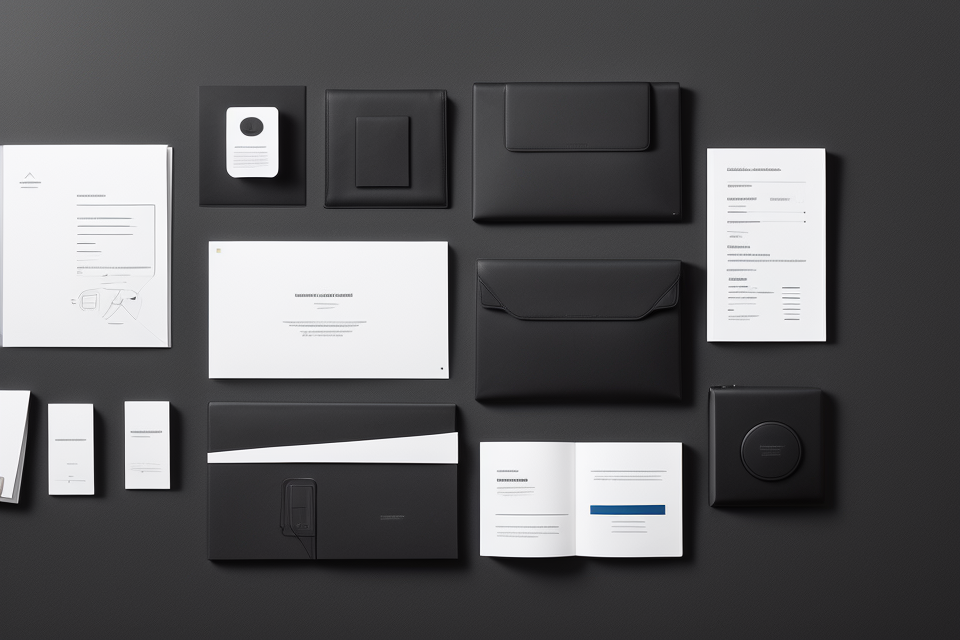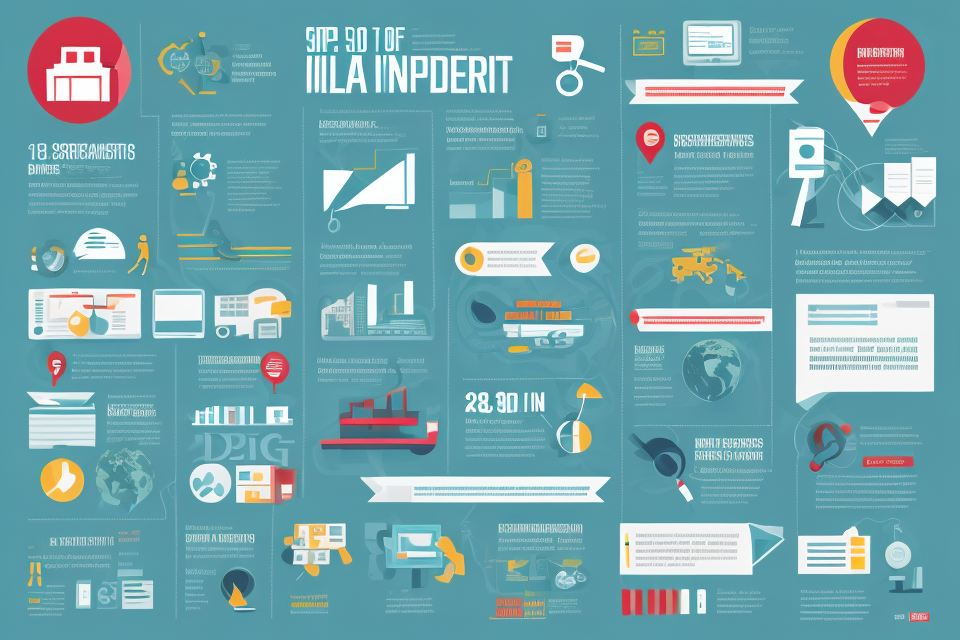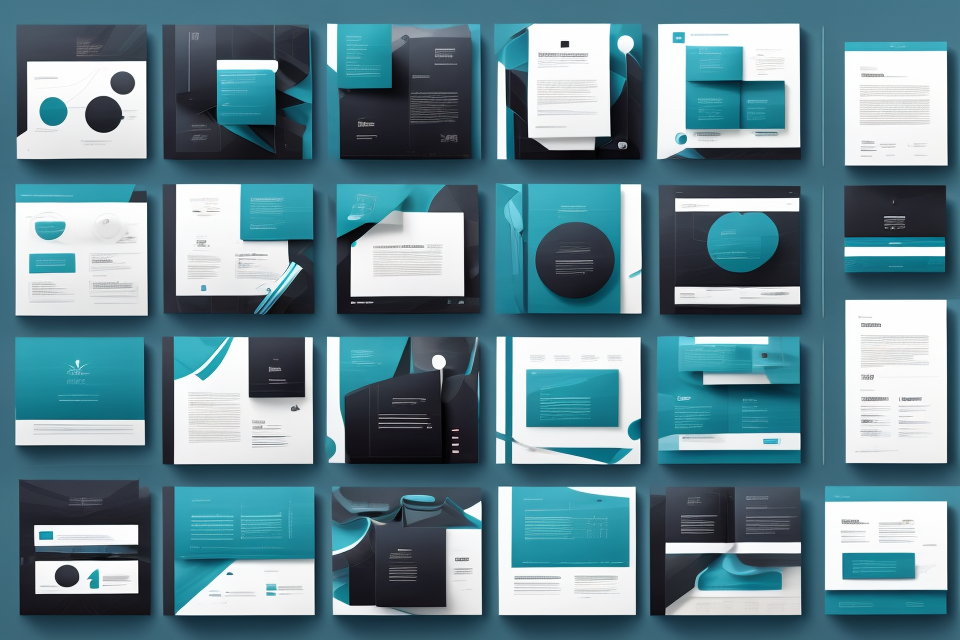Design is all around us, from the phone we use to the clothes we wear, it’s a part of our daily lives. But what makes a design concept good? A good design concept is one that is functional, aesthetically pleasing, and solves a problem. It is a combination of various elements such as color, form, space, and texture. A good design concept also takes into account the principles of design, which include balance, unity, and hierarchy. In this article, we will explore the key elements and principles of a good design concept and the strategies that can help you create one. Whether you’re a professional designer or just starting out, understanding what makes a good design concept is essential for creating successful designs.
Understanding the Concept of a Good Design
The Importance of Design in Today’s World
Design has become an essential element in today’s world, transforming the way we interact with products, services, and technology. The importance of design lies in its ability to enhance user experience, create brand identity, and improve overall functionality.
User Experience and Design
User experience (UX) design focuses on creating products and services that provide a seamless and enjoyable experience for users. A good design concept takes into account the needs and expectations of the user, ensuring that the product is intuitive, easy to use, and meets the user’s goals.
User-Centered Design Principles
User-centered design principles prioritize the user’s needs and goals throughout the design process. This approach involves conducting user research to gain insights into user behavior, preferences, and pain points. By understanding the user’s perspective, designers can create products that are tailored to their needs and preferences.
Empathy and User Research
Empathy is a critical component of user-centered design. It involves putting oneself in the user’s shoes to understand their needs, goals, and motivations. User research methods such as interviews, surveys, and usability testing help designers gather insights into user behavior and preferences.
User-Centered Design Process
The user-centered design process involves a cyclical approach to design, where designers continually iterate and refine their designs based on user feedback. This process typically involves the following stages:
- Research: Gathering insights into user needs and preferences through various research methods.
- Ideation: Generating ideas and concepts that address user needs and goals.
- Prototyping: Creating a physical or digital prototype to test and refine the design concept.
- Testing: Gathering feedback from users to identify areas for improvement and iterate on the design.
Iterative Design and Testing
Iterative design and testing involve a continuous cycle of prototyping, testing, and refinement. This approach allows designers to identify and address issues early in the design process, reducing the risk of costly mistakes later on. By continually refining the design based on user feedback, designers can create products that meet user needs and expectations.
Aesthetics and Design
Aesthetics play a crucial role in design, as they contribute to the overall visual appeal and brand identity of a product. A good design concept should incorporate principles of visual hierarchy, balance, color theory, and typography to create a cohesive and visually appealing product.
Visual Hierarchy and Balance
Visual hierarchy and balance refer to the arrangement of visual elements in a design, creating a sense of order and structure. This involves using size, color, and placement to draw the user’s attention to the most important elements of the design. Balancing visual elements ensures that the design is aesthetically pleasing and easy to navigate.
Color Theory and Branding
Color theory is an essential aspect of design, as it contributes to the overall brand identity and visual appeal of a product. A good design concept should incorporate a consistent color scheme that reflects the brand’s personality and values. This helps to create a strong visual identity that is recognizable and memorable.
Typography and Readability
Typography plays a critical role in design, as it affects readability and legibility. A good design concept should incorporate appropriate typography that is easy to read and aligns with the brand’s visual identity. This involves choosing the right font, size, and spacing to ensure that the text is clear and easy to read.
Elements of a Good Design
A good design is a culmination of various elements that work together to create a seamless user experience. The following are some of the key elements that define a good design:
Clarity and Conciseness
Communicating information effectively is crucial in good design. The information should be presented in a clear and concise manner, making it easy for users to understand and act on it. This can be achieved through effective content strategy and messaging, as well as through good information architecture and navigation. Visual communication and iconography also play a significant role in ensuring that the information is presented in a way that is easy to understand.
User-Friendly Interfaces
User-friendly interfaces are another critical element of good design. The interface should be designed in such a way that it is easy for users to navigate and interact with the system. This involves creating interfaces that are intuitive and easy to use, with clear and concise instructions that guide the user through the system. Usability and accessibility are also critical considerations in designing user-friendly interfaces. Usability testing and heuristics can be used to identify potential usability issues and improve the overall user experience. Accessibility standards and guidelines should also be followed to ensure that the system is accessible to all users, regardless of their abilities.
Feedback and Error Prevention
Feedback and error prevention are also important elements of good design. The system should provide clear and concise feedback to the user, indicating whether their actions were successful or not. Feedback mechanisms should be designed in such a way that they are easy to understand and provide useful information to the user. Error prevention techniques and strategies should also be employed to minimize the likelihood of errors occurring in the first place. This can involve things like clear and concise instructions, error messages that provide useful information, and input validation techniques that prevent errors from occurring in the first place.
Strategies for Developing a Good Design Concept
Research and Analysis
Market Research and Competitive Analysis
Market research and competitive analysis are essential components of the research and analysis phase of developing a good design concept. These methods allow designers to understand the target audience, user needs, industry trends, and best practices, which can inform the design process and help create a successful product.
Identifying Target Audiences and User Needs
Identifying target audiences and user needs is a crucial step in the market research process. By understanding the needs and preferences of the target audience, designers can create products that meet their requirements and expectations. This can involve conducting surveys, focus groups, and interviews to gather information about user needs and preferences.
Identifying Industry Trends and Best Practices
Identifying industry trends and best practices is another important aspect of market research. By staying up-to-date with the latest trends and developments in the industry, designers can create products that are innovative and competitive. This can involve analyzing industry reports, attending conferences and events, and networking with other professionals in the field.
Gathering Feedback and Iterating on Design Concepts
Gathering feedback and iterating on design concepts is a critical step in the design process. By soliciting feedback from users, stakeholders, and other relevant parties, designers can identify areas for improvement and refine their design concepts. This can involve conducting usability tests, A/B testing, and other forms of user testing to gather feedback and iterate on design concepts.
Prototyping and Testing
Prototyping and testing are essential strategies for developing a good design concept. Through prototyping, designers can create tangible representations of their ideas and test them with users to gather feedback and refine the design. There are two types of prototyping: low-fidelity and high-fidelity prototyping.
Low-Fidelity and High-Fidelity Prototyping
Low-fidelity prototyping involves creating basic representations of the design concept, such as sketches or wireframes. These prototypes are typically quick and inexpensive to create and can be used to test basic design concepts and layout. High-fidelity prototyping, on the other hand, involves creating more detailed and polished representations of the design concept, such as interactive mockups or simulations. These prototypes are typically more time-consuming and expensive to create but can provide a more realistic representation of the final product.
Wireframing and Prototyping Tools
There are a variety of wireframing and prototyping tools available to designers, each with its own strengths and weaknesses. Some popular tools include Sketch, Figma, Adobe XD, and InVision. These tools allow designers to create low-fidelity and high-fidelity prototypes, test user interactions, and gather feedback.
User Testing and Iterative Design
User testing is a crucial part of the prototyping process. By testing the prototype with users, designers can gather feedback on the design concept and identify areas for improvement. This feedback can then be used to refine the design and iterate on the prototype until it meets the needs and expectations of the target audience. Iterative design involves a cyclical process of prototyping, testing, and refining the design concept based on user feedback. This process can help designers create design concepts that are both functional and user-friendly.
Collaboration and Communication
Collaboration and communication are crucial strategies for developing a good design concept. They involve working together with stakeholders, team members, and other relevant parties to ensure that the design concept meets the needs and expectations of all involved.
Stakeholder Engagement and Feedback
Stakeholder engagement and feedback are critical components of collaboration and communication. It is essential to establish communication channels and expectations with stakeholders early in the design process. This includes identifying key stakeholders, understanding their needs and expectations, and determining how they will be involved in the design process.
Managing stakeholder expectations and conflicts is also crucial. This involves ensuring that all stakeholders are aware of the design constraints and trade-offs, and that their expectations are realistic. It may also involve facilitating discussions and negotiations to resolve conflicts and reach consensus.
Design Review and Critique
Design review and critique are essential components of collaboration and communication. Peer review and feedback can provide valuable insights and suggestions for improving the design concept. It is important to establish a design critique culture and process that encourages open and constructive feedback. This may involve setting up regular design reviews, establishing ground rules for feedback, and ensuring that all team members are involved in the critique process.
Iterative Refinement and Implementation
Iterative refinement and implementation is a strategy that involves refining design concepts and solutions through user testing and feedback, as well as implementing those solutions while designing for scalability and maintenance.
Refining Design Concepts and Solutions
Iterative refinement and implementation involves a process of refining design concepts and solutions through user testing and feedback. This process can be broken down into several steps:
User Testing and Feedback
User testing and feedback is a critical component of iterative refinement and implementation. This process involves testing design concepts and solutions with users to gather feedback on usability, functionality, and overall user experience. User testing can take many forms, including usability testing, focus groups, and surveys.
Designing for Different Platforms and Devices
In addition to user testing and feedback, iterative refinement and implementation also involves designing for different platforms and devices. This process ensures that design concepts and solutions are optimized for use on a variety of devices and platforms, including desktop and mobile devices, as well as different operating systems and browsers.
Implementing Design Solutions
Once design concepts and solutions have been refined through user testing and feedback, and optimized for different platforms and devices, they can be implemented. Implementation involves designing for scalability and maintenance, which ensures that design solutions can be easily updated and maintained over time.
Design Handoff and Collaboration with Development Team
Design handoff and collaboration with the development team is an important aspect of implementing design solutions. This process involves handing off design specifications and assets to the development team, as well as collaborating with them to ensure that design solutions are implemented correctly.
Designing for Scalability and Maintenance
Designing for scalability and maintenance is a critical component of implementing design solutions. This process involves designing solutions that can be easily updated and maintained over time, as well as ensuring that they are built using scalable technologies and frameworks.
Overall, iterative refinement and implementation is a powerful strategy for developing a good design concept. By refining design concepts and solutions through user testing and feedback, designing for different platforms and devices, and implementing design solutions with scalability and maintenance in mind, designers can create solutions that are optimized for usability, functionality, and overall user experience.
Key Takeaways
Importance of User-Centered Design
- Emphasizes the end-user’s needs and expectations
- Guides design decisions to ensure usability and functionality
- Enhances user satisfaction and overall product success
Elements of a Good Design
- Aesthetic-only design: visual appeal without functional value
- Aesthetic and functional design: balance between form and function
- Functional design: focuses on practicality and problem-solving
- Aesthetic, functional, and reflective design: considers user needs, technology, and business goals
Strategies for Developing a Good Design Concept
Research and Analysis
- Identify target audience and user needs
- Analyze market trends and competitors
- Determine technical feasibility and constraints
Prototyping and Testing
- Create a basic model or prototype to test design concepts
- Gather feedback from users and stakeholders
- Iterate and refine the design based on feedback
Collaboration and Communication
- Involve a diverse team of designers, developers, and stakeholders
- Foster open communication and collaboration
- Encourage creative problem-solving and idea sharing
Iterative Refinement and Implementation
- Continuously refine and improve the design concept
- Validate design decisions through testing and user feedback
- Iterate until the desired outcome is achieved
Conclusion
- A good design concept is user-centered, functional, and visually appealing
- Effective strategies for developing a good design concept include research, prototyping, collaboration, and iterative refinement
- A successful design concept requires ongoing refinement and implementation
Key Takeaways
- A good design concept prioritizes user needs and functionality
- Effective strategies for developing a design concept include research, prototyping, collaboration, and iterative refinement
- A successful design concept requires a balance of aesthetics, functionality, and user reflection
FAQs
1. What is a good design concept?
A good design concept is a clear and well-defined idea that guides the creation of a design solution. It should be focused on solving a specific problem or meeting a particular need, and should be grounded in an understanding of the user and their needs. A good design concept should also be feasible, meaning that it can be implemented within the constraints of time, budget, and resources.
2. What are the principles of good design?
There are many principles of good design, but some of the most important include simplicity, consistency, and usability. A good design should be simple and easy to understand, with clear and intuitive interactions. It should also be consistent, meaning that the design should be coherent and adhere to established standards and guidelines. Finally, a good design should be usable, meaning that it should be easy for users to learn and use effectively.
3. What are the elements of good design?
The elements of good design can vary depending on the context and the specific problem being addressed, but some common elements include form, function, and aesthetics. A good design should have a clear and distinct form that is appropriate for its function, and should also be visually appealing and aesthetically pleasing.
4. What are some strategies for creating a good design concept?
There are many strategies for creating a good design concept, but some common ones include conducting user research, defining clear goals and objectives, and prototyping and testing early and often. It is also important to stay focused on the problem or need that the design is intended to solve, and to be open to feedback and iteration throughout the design process.



